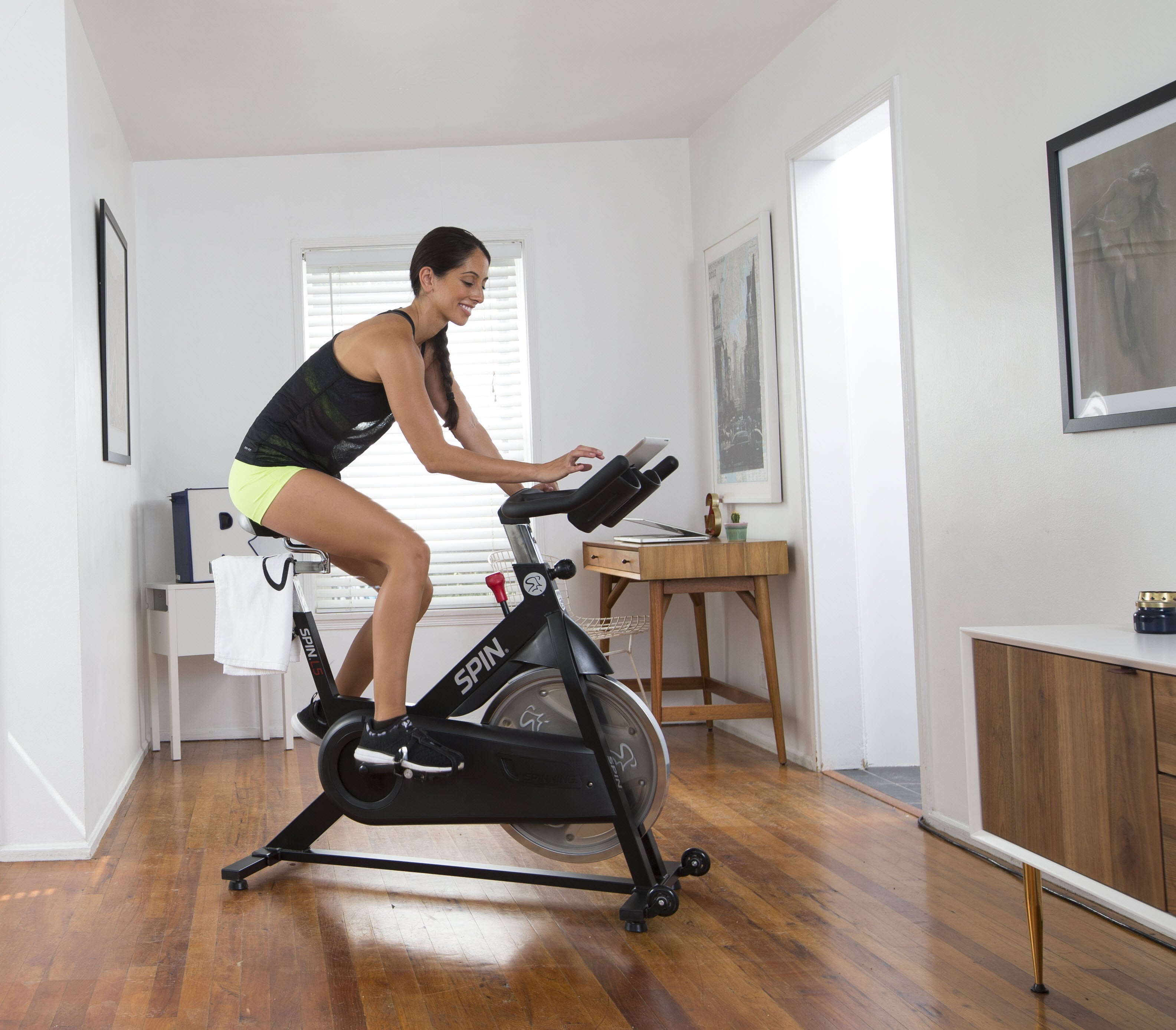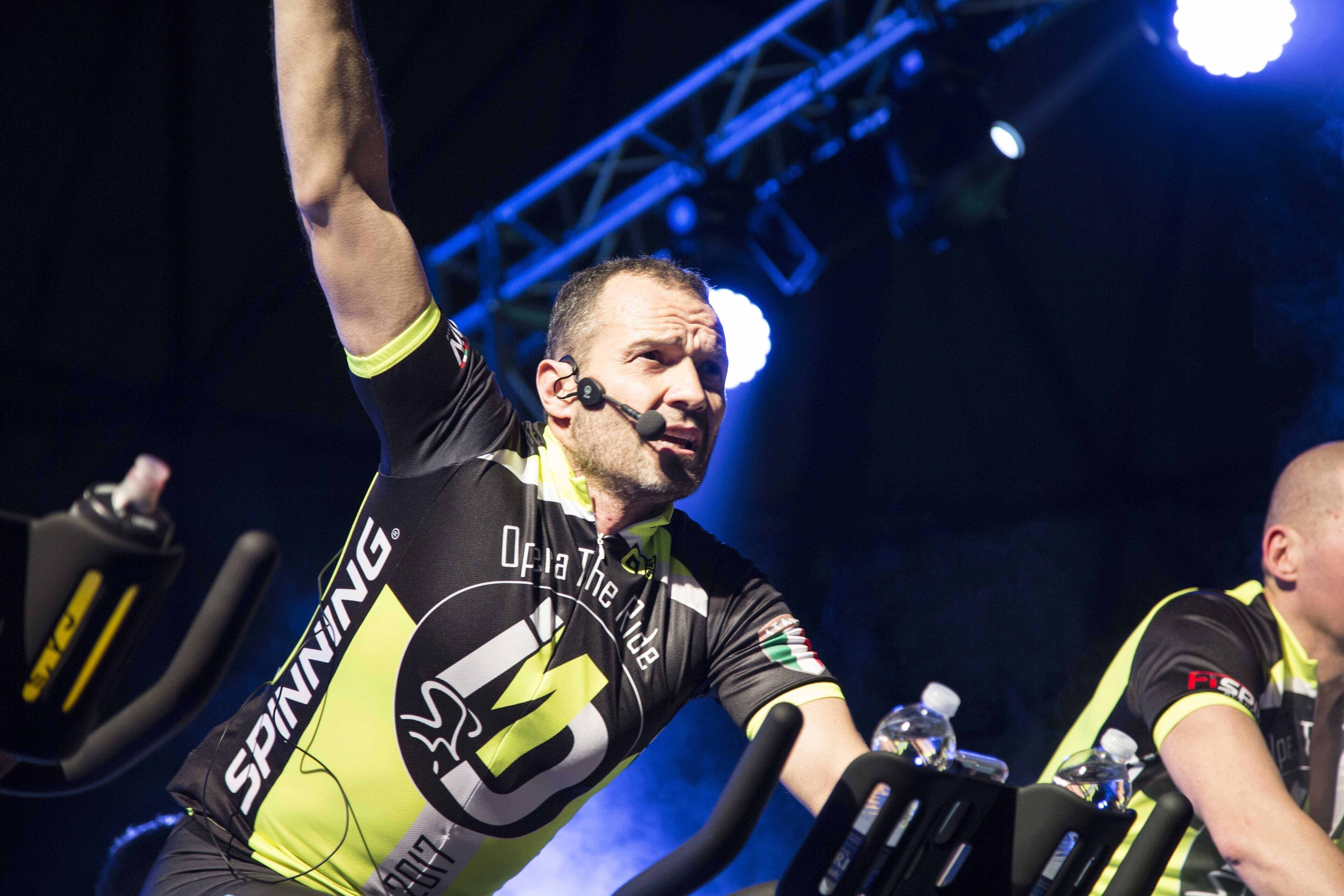As a Spinning® instructor, you're far more than just a coach; you're a role model! Find out what it takes to become a true role model and impact students' lives today!
Becoming a role model fitness instructor requires much more than having a nice physique and looking good in fitness attire. Years ago, the instructor who taught the hardest class packed the room; however over the years, the fitness industry has changed tremendously. Today, students aren't necessarily looking for the
hardest class, but the
smartest class.As Spinning® instructors, it is our responsibility to create and maintain a professional image. In order to gain the respect of our students and reflect well upon our employer, it is imperative that we make smart choices, set good examples and become top-notch role models.Our priorities as leaders in the fitness industry are to teach a safe, effective and enjoyable classes so that students feel successful and look forward to coming back. Meeting these priorities often requires instructors to wear more than one hat. So how do we tackle each of these essential roles?
The Roles and Traits of a Successful Fitness Leader
Leaders in the field of fitness take on three primary jobs:
Motivator: Although most students are fitness enthusiasts and enjoy exercise, some participants do not. They may require extra motivation to adhere to an activity. So it is vital that instructors maintain a positive attitude and express enthusiasm. Make it a point to encourage new students as well as existing students, and strive to take each class participant to their next level in fitness.
Educator: Leading a successful fitness program requires expertise in anatomy, physiology and kinesiology. So attaining and maintaining a nationally recognized certification is an absolute necessity. CPR and First Aid training is also a huge plus. Over the years, not only have fitness instructors become better educated, but so have our students.
Professional: This means arriving to class early to greet students and assist them with bike set-up. Be prepared, however open-minded and willing to change. You may prepare for a challenging ride and arrive to class to find your students are your mother and her 12 friends! The goal is to at least have a general idea of what you are going to do that day, however be prepared to modify. After class, make yourself available for a few minutes to answer questions. Remember to dress professionally and use appropriate language and music.Although most fitness leaders enjoy their work, we are often faced with challenges, such as instructor burn-out, overtraining and anxiety.
Tips on How to Keep it Fresh
- Attend and observe other instructors classes to open your mind to creativity, learn new techniques and a explore a variety of cueing methods
- Use new music and a mixture of music styles
- Change the warm-up and/or cool-down segments
- Attend continuing education workshops, conventions or online courses
- Obtain additional certifications to bolster your education and credibility
- Remain current in the fitness industry by reading the latest research and guidelines and professional journals
How to Avoid Overtraining Your Students
- Vary the type and intensity level of your classes to decrease localized stress and reduce the risk of injury
- Cross train to pump up the variety and benefits of sessions
- Limit the number of classes you teach
- Do not teach classes when you are ill
- Teach off your bike to get a better look at form and alignment and connect more closely with students
- Maintain a healthy diet and balance your meals in regard to carbohydrates, protein and fat consumption
- Hydrate, hydrate, hydrate!
- Be aware of and correct muscle imbalance
- Get plenty of sleep
Overcoming Anxiety
Anxiety typically occurs with new instructors, but even seasoned instructors suffer from anxiousness before a convention, major event or even your average class. It is perfectly natural to experience performance anxiety, but there are a number of ways to overcome it:
- Prepare! If you wing it, your students will know it.
- Practice prior to teaching
- Mentor with a seasoned instructor and teach a class segment prior to teaching a full class
- Be confident
- Evaluate what worked and what did not work
- Arrive to class early to allow time to set up and prepare mentally and physically
- Attend and observe other instructors classes
- Remember that everyone makes mistakes. So when they happen, learn from them and move on quickly and with confidence.
Teaching fitness classes is a rewarding experience. We have the opportunity to meet amazing people and help them to live a healthy lifestyle. Make it a point to inform and encourage your students in every class, and remember we are not only changing bodies; we are changing lives!
Ready to become a role model? Test your knowledge and earn 1 CEC!
Take the CEC QuizThis article was contributed by Lisa Hamlin, Director of International Education and Programs – Mad Dogg Athletics






Leave a comment
This site is protected by hCaptcha and the hCaptcha Privacy Policy and Terms of Service apply.